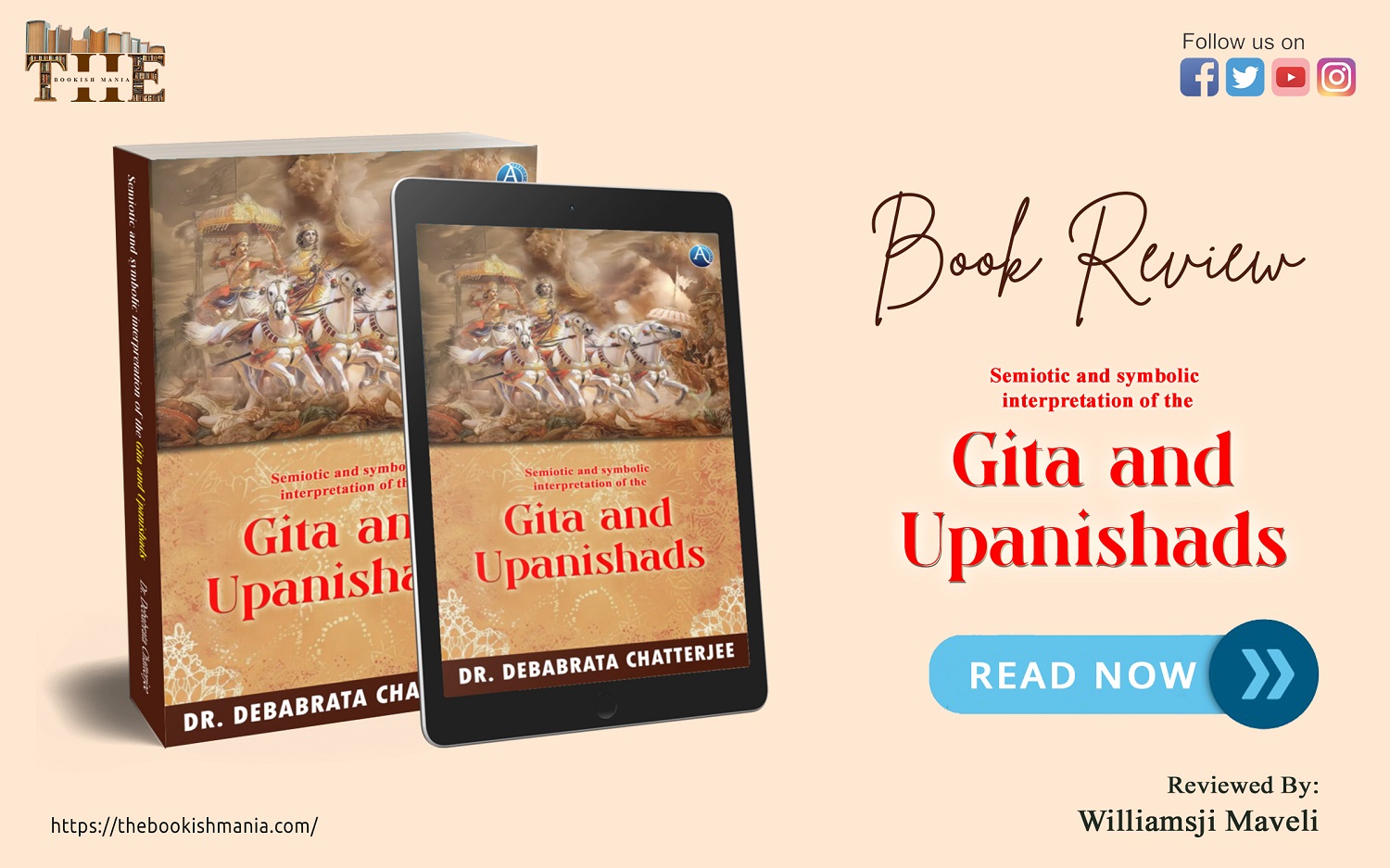Book Review: Semiotic and symbolic interpretation of the Gita and Upanishads by Dr. Debabrata Chatterjee

Dr. Debabrata Chatterjee’s work, Semiotic and Symbolic Interpretation of the Gita and Upanishads, delves deep into the rich symbolic and semiotic framework of two of the most revered scriptures of Indian philosophy: the Bhagavad Gita and the Upanishads. These texts, known for their profound spiritual and philosophical insights, have guided seekers for millennia. The book offers a unique lens through which readers can explore these ancient texts, emphasizing the roles of signs, symbols, and metaphors in conveying deeper spiritual truths.
At its core, the book seeks to bridge the traditional wisdom found in the Gita and Upanishads with modern semiotic theories. It examines how these sacred scriptures use symbols and metaphors to communicate profound concepts about human existence, the self, and the cosmos. For centuries, these texts have been interpreted in various ways, but Dr. Chatterjee’s approach brings a fresh perspective by highlighting the semiotic elements and symbolic meanings embedded within them. Through this exploration, readers are invited to uncover the hidden layers of spiritual teachings, offering new insights into the universal questions about life and the ultimate purpose.
The first part of the book provides a comprehensive introduction to the importance of semiotics and symbolism in Indian philosophy, underscoring their critical role in understanding the spiritual essence of the Gita and Upanishads. It explains how symbols like Dharma, Karma, and Atman are not just abstract ideas but living representations of deeper truths that influence human behavior and spiritual practices. Dr. Chatterjee’s analysis shows how these symbols can be decoded, revealing connections to yogic principles and practices aimed at self-realization.
In the subsequent chapters, the author embarks on a thematic exploration of significant metaphors present in the Gita and Upanishads. One of the central themes explored is the battlefield of Kurukshetra, depicted as a metaphor for inner conflict—a pivotal teaching of the Gita. Similarly, the concept of Brahman, as the ultimate goal of yoga, is analyzed in depth. Through this symbolic framework, the book discusses the importance of unity with the divine, offering readers a pathway to spiritual enlightenment through practices such as Gyana Yoga, Karma Yoga, and Bhakti Yoga. These paths are dissected not just philosophically but also symbolically, emphasizing their representation in the scriptures as methods to achieve liberation.
The Gita and Upanishads are replete with potent symbols like Krishna, Arjuna, the chariot, and the Sudarshan Chakra. Dr. Chatterjee’s analysis of these iconic symbols is thorough, providing readers with a detailed interpretation of their deeper meanings. For instance, Krishna’s role as the divine guide and Arjuna’s inner turmoil are examined in terms of their symbolic significance for modern seekers. The chariot, which represents the body, and the Sudarshan Chakra, which symbolizes spiritual wisdom, are explored for their relevance in the journey toward self-realization
The Upanishads also feature symbols like Om (Aum), the banyan tree, and Maya—each representing key philosophical ideas such as the essence of the universe, the eternal cycle of life, and the illusory nature of the material world. Dr. Chatterjee masterfully decodes these symbols, providing readers with a deeper understanding of their application to daily life and spiritual growth.
Through its exploration of the Gita and Upanishads, this book emphasizes the continual relevance of these texts in the modern world. By blending ancient wisdom with contemporary semiotic theories, the author offers a fresh perspective on spirituality, ethics, and the transformative power of symbols. The book not only unpacks the metaphors and symbols within these sacred scriptures but also shows how they continue to shape and influence our thoughts on yoga, devotion, and liberation.
In conclusion, Semiotic and Symbolic Interpretation of the Gita and Upanishads is a remarkable work that invites readers to look beyond the surface of these ancient texts and discover their deeper, symbolic meanings. Dr. Chatterjee’s ability to blend critical analysis with spiritual insight offers a profound resource for anyone seeking to understand the timeless wisdom of the Gita and Upanishads in a new light. Whether a student of philosophy, a seeker of spiritual truth, or an individual interested in the semiotic dimensions of sacred texts, this book provides invaluable insights into the ever-relevant teachings of these revered scriptures.

Author Name: Dr. Debabrata Chatterjee
Book Title: Semiotic and symbolic interpretation of the Gita and Upanishads
Publisher: Authors Click Publishing
Amazon Link: Order Now





